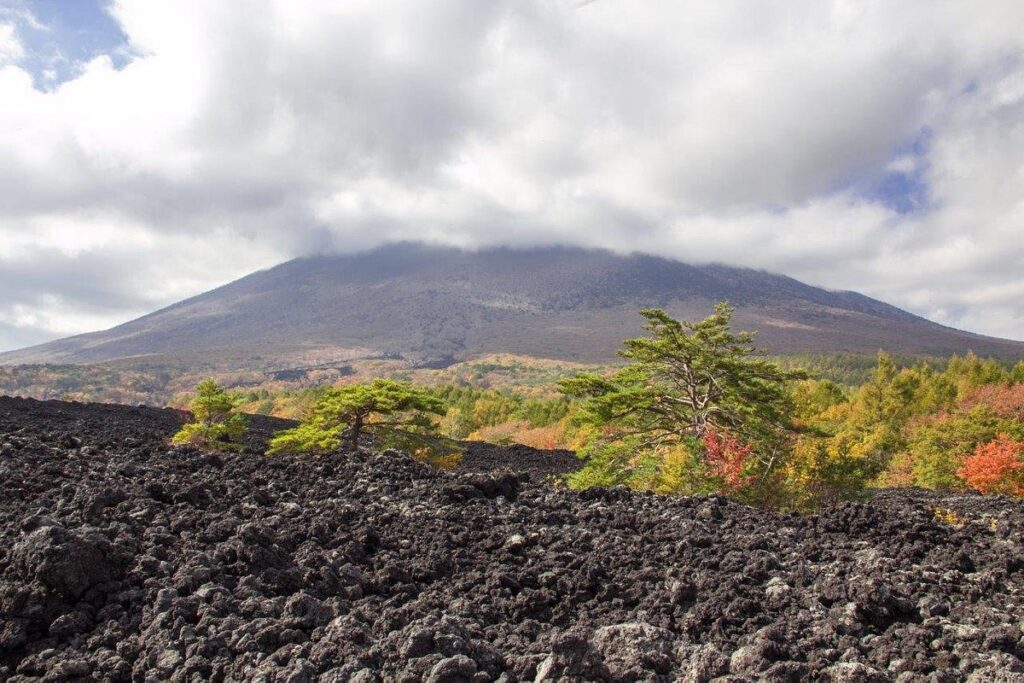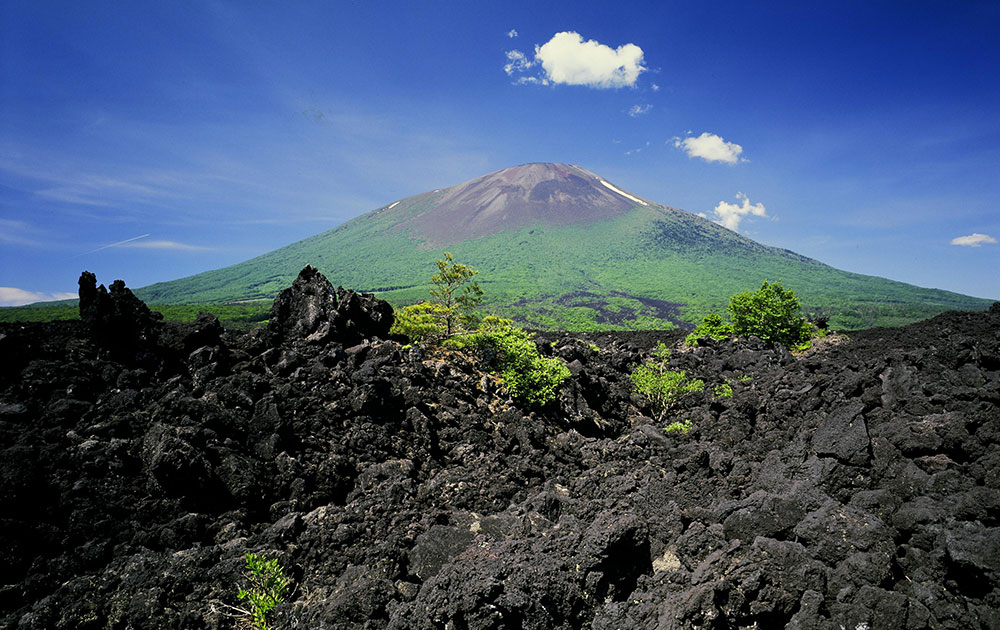Yakiashi Lava Flow and the Power of Nature
The Yakiashi lava flow resulted from volcanic activity in 1732. Lava erupted from several fissures on the northeast slope of Mount Iwate, between elevations of 920 and 1200 meters, and flowed approximately 3 kilometers down the mountain. At its widest point, the flow reached a width of 1 kilometer. Along the observation route, the lava flow is 5 to 10 meters deep.
Rocks found around the Yake-Hashiri area range in size from fist-sized to one meter in diameter. They are composed of olivine-bearing pyroxene andesite, with individual rocks differing in weight and surface texture, primarily due to variations in weathering patterns. Surface temperatures of the lava can reach a maximum of 40°C in summer and a minimum of -20°C in winter, creating a harsh environment.
Lava flows are relatively common in Japan, but the Yakehashiri Lava Flow is noteworthy for several reasons. One is that the precise date of the eruption is known. Furthermore, the lava flow has not undergone significant topographical changes. Additionally, despite nearly 300 years having passed, the lava flow still retains little vegetation, with only moss, lichen, and a few vascular plants growing on the volcanic rock. As a result, it remains largely unchanged, making it a fascinating site for scientists to study.



